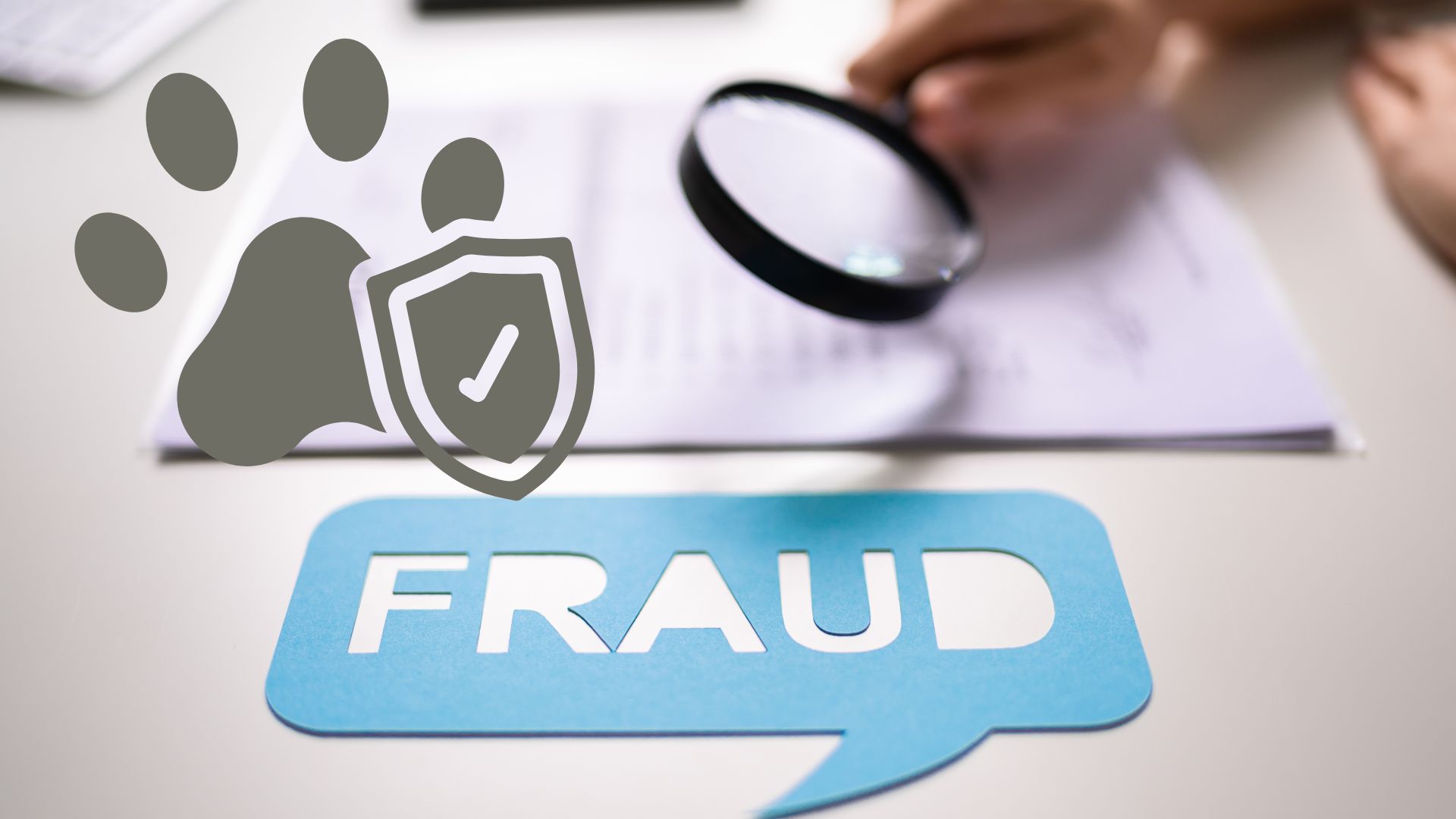Pet insurance, once a trusted safety net for unexpected vet bills, is now facing an unsettling challenge in the United States. Fraud within the industry is on the rise, and its implications stretch far beyond the perpetrators and insurers. With insurance fraud costing Americans $308.6 billion annually—that’s $932 for every single person in the US each year—we’re not talking about pocket change. Fraudulent pet insurance claims, in particular, are compounding industry challenges and hitting honest pet owners where it hurts most—in their wallets and their trust.
From exaggerated claims to outright fabrications involving imaginary pets, this growing issue is impacting premiums, making it harder for ethical insurers to deliver affordable, quality coverage. But what exactly does pet insurance fraud look like in practice, why is it happening, and what can we do to curb it?
Common Types of Pet Insurance Fraud
Fraud in the pet insurance world comes in all shapes and sizes, ranging from crafty exaggerations to staggering abuses of the system. A striking example involves a man in Ohio who submitted a $7,288.05 insurance claim for extensive vet services—including hospitalization—for his dog. Upon investigation, it turned out the actual bill was only $214.60, covering a simple consult and a prescription. He falsified documents and inflated costs to siphon funds from the insurer. His scam didn’t end there; the same individual was convicted of filing over 20 fraudulent claims across multiple insurers, amounting to $229,000 in stolen payouts.
Beyond individual schemes, systemic violations within the industry are also coming to light. Take the recent case in Washington state, where two pet insurers overcharged 18,000 policyholders by $4.7 million over nearly five years. They not only raised rates without notifying customers but also imposed unfair restrictions on cancellations and misapplied discounts. For their violations, the insurers were hit with a $950,000 fine and required to implement compliance reforms.
Fraud isn’t limited to exaggerated vet bills or fabricated claims. It also includes more nefarious cases, like the deliberate harm or neglect of animals for financial gain. While these disturbing instances are rare, they remain a grim reminder of how far some individuals will go when economic pressures mount.
What’s Driving the Surge in Fraud?
At the heart of this growing problem is a perfect storm of factors. For starters, rising veterinary costs make it more tempting for individuals to stretch the truth. The cost of pet care in the US has skyrocketed in recent years, with routine and emergency treatments more expensive than ever. A single incident, such as a surgery for a torn ligament, can easily climb into the thousands. High bills, coupled with stagnant wages and economic strain, present an environment where the need for financial relief can nudge some toward fraud.
Weak regulatory oversight further compounds the problem. Unlike human healthcare, veterinary records don’t follow pets between clinics. This lack of continuity opens the door for fraudulent claims, as there’s often no mechanism for insurers to verify an animal’s medical history across multiple providers. Combine this with limited fraud-detection tools and insufficient cross-company data sharing, and you’ve got a system struggling to adapt to modern risks.
Economic fraud, however, isn’t solely limited to desperate policyholders. It can also emerge from lapses within the insurance companies themselves, as the Washington case illustrates. Such violations erode trust and fuel skepticism over whether industry systems are built to truly benefit consumers or pad corporate bottom lines.
The Fallout for Pet Owners and Insurers
The financial ripple effects of pet insurance fraud are hard to ignore. Every dishonest claim or overcharge adds to the collective burden, often passed down to policyholders in the form of higher premiums. For millions of pet parents trying to do right by their furry companions, this means paying increasingly steep prices for peace of mind. But as insurers hike rates to offset fraud-related losses, they also risk alienating the very customers they rely on.
Then there’s the ethical toll. Fraud not only tarnishes the reputation of the pet insurance industry but can also lead to worse outcomes for pets themselves. Limited resources stretched thin by fraudulent claims may mean slower reimbursements or tougher scrutiny for legitimate ones. Meanwhile, the rare cases where harm comes to animals as part of fraudulent schemes reveal a deeply disheartening side to this issue.
Solutions and Prevention in a US Context
The good news is that action is being taken. Efforts to fight pet insurance fraud in the US are ramping up, with state-level agencies and industry leaders exploring preventative measures. One of the most impactful proposals involves creating fraud databases, where claims histories can be tracked across insurers. By identifying repeat offenders early, these systems could reduce instances of serial fraud.
Take, for example, the concepts already in play in auto insurance and other sectors. Fraud registries and collaborative intelligence-sharing between insurers have proven effective in catching and deterring fraudsters. Extending these tools to pet insurance could yield similar results.
For high-value animals, mandatory microchipping offers an additional layer of security, ensuring that the animal tied to a claim is easily verifiable. Some regulators are also advocating for reforms in how veterinary costs are documented and billed to prevent unnecessary or inflated charges for insured pets.
Perhaps most importantly, insurers are now leaning on technology. Artificial intelligence and machine learning algorithms can sift through claims databases to flag patterns that signal potential fraud. When paired with more rigorous vetting processes at the policy application stage, these innovations offer new hope for reducing fraudulent activity.
What Can Pet Owners Do?
For pet parents, safeguarding against fraud starts with being informed. Carefully read policies before purchasing to ensure you understand what’s covered, and document your pet’s medical history thoroughly. When filing claims, provide detailed, accurate information, and keep a record of all veterinary receipts and communications.
Additionally, stay alert for signs of bad practice. If your insurer fails to disclose rate increases or misrepresents itself—as seen in the Washington case—report it to your state’s insurance commissioner. Public oversight works best when consumers actively participate in holding companies accountable.
Looking to the Future
The US pet insurance industry is at a crossroads. Fraud threatens its ability to deliver affordable, reliable coverage, but with stronger oversight, better technology, and industry collaboration, there’s room for optimism. Addressing fraud won’t just save money; it will ensure that pet insurance fulfills its core promise—to protect the health and well-being of our beloved animals.
By staying informed and supporting reform, pet owners can help foster a system that values accountability as much as it values our furry family members. After all, the fight against fraud isn’t just about dollars and cents. It’s about trust, compassion, and the shared responsibility of caring for creatures that count on us every day.


